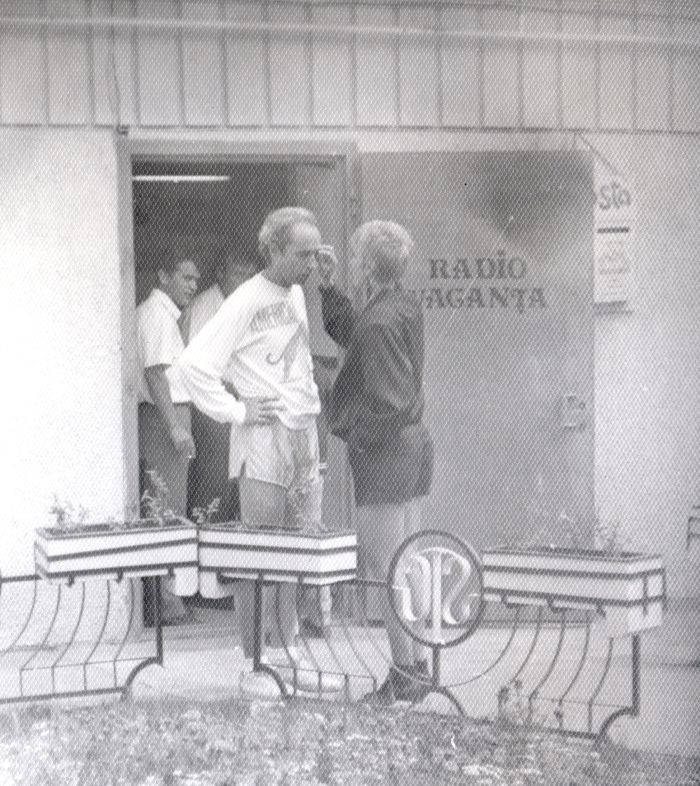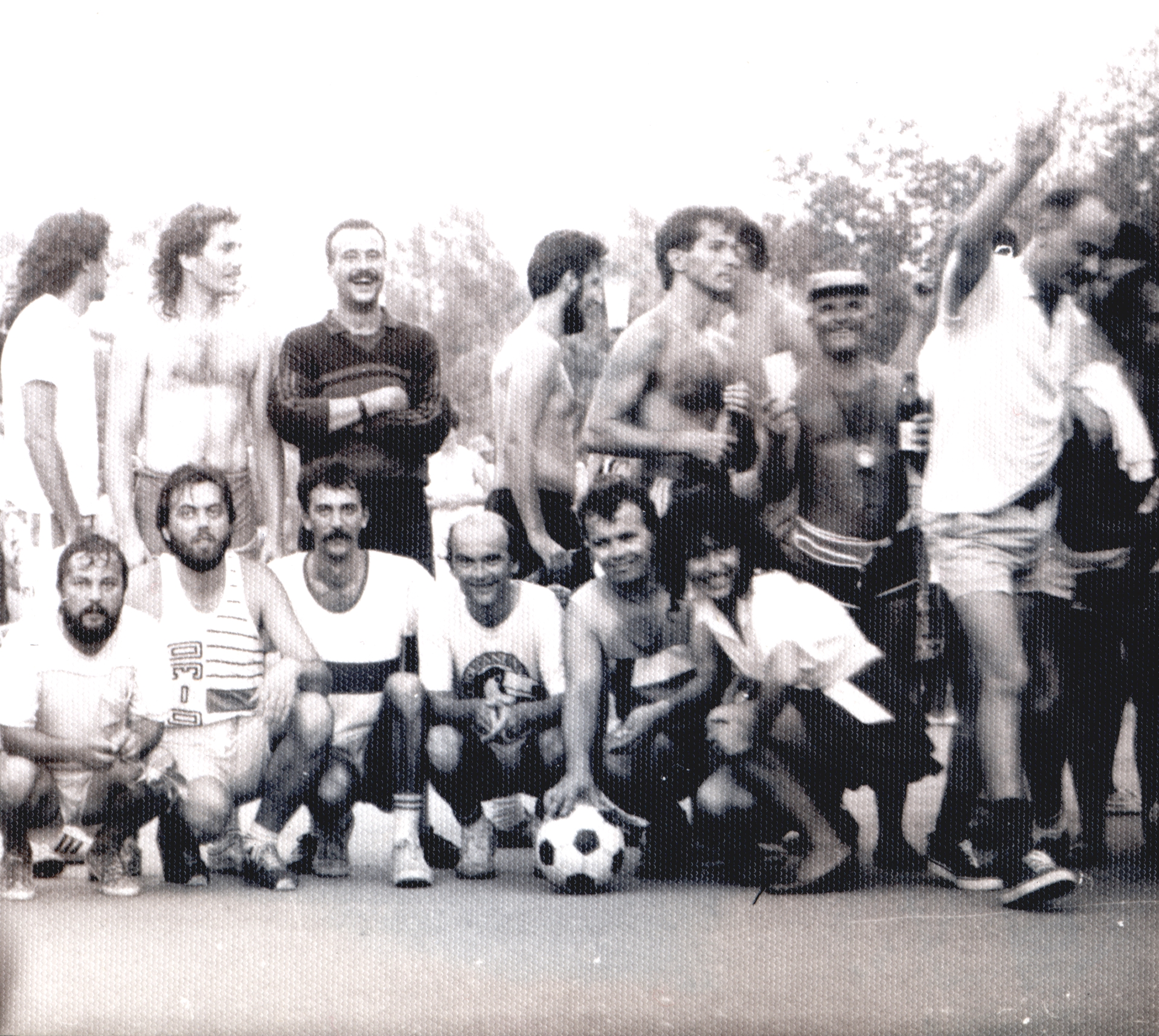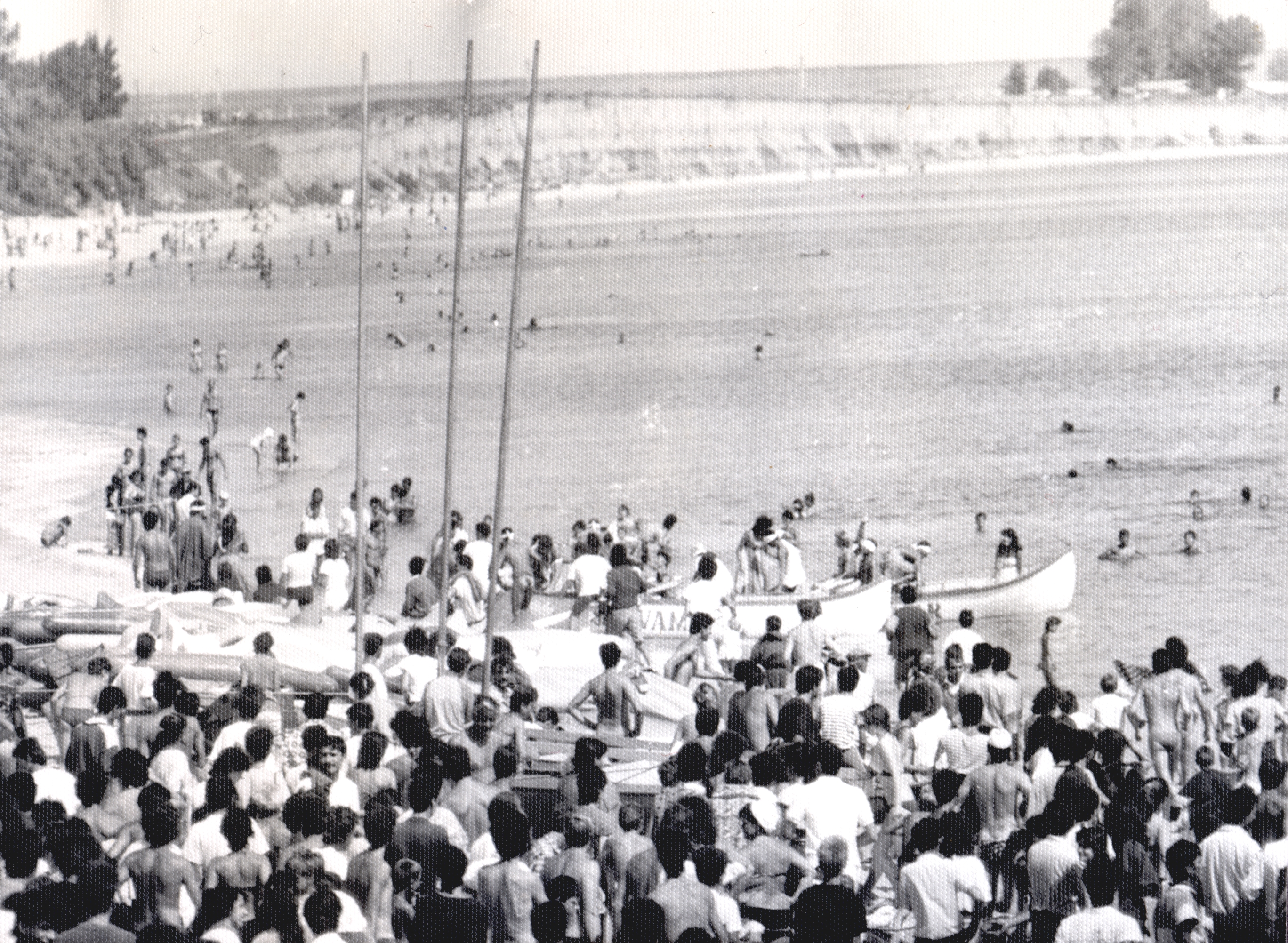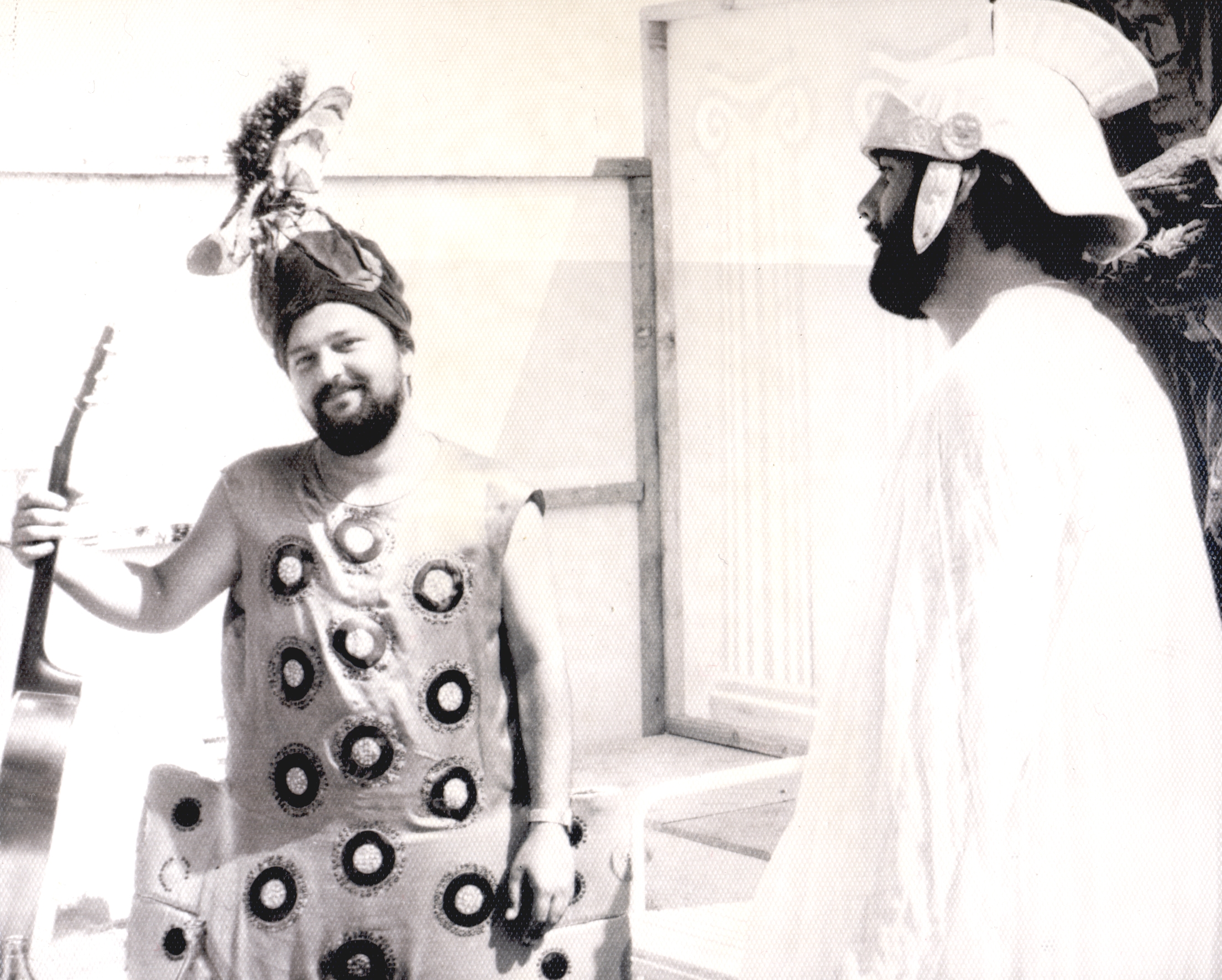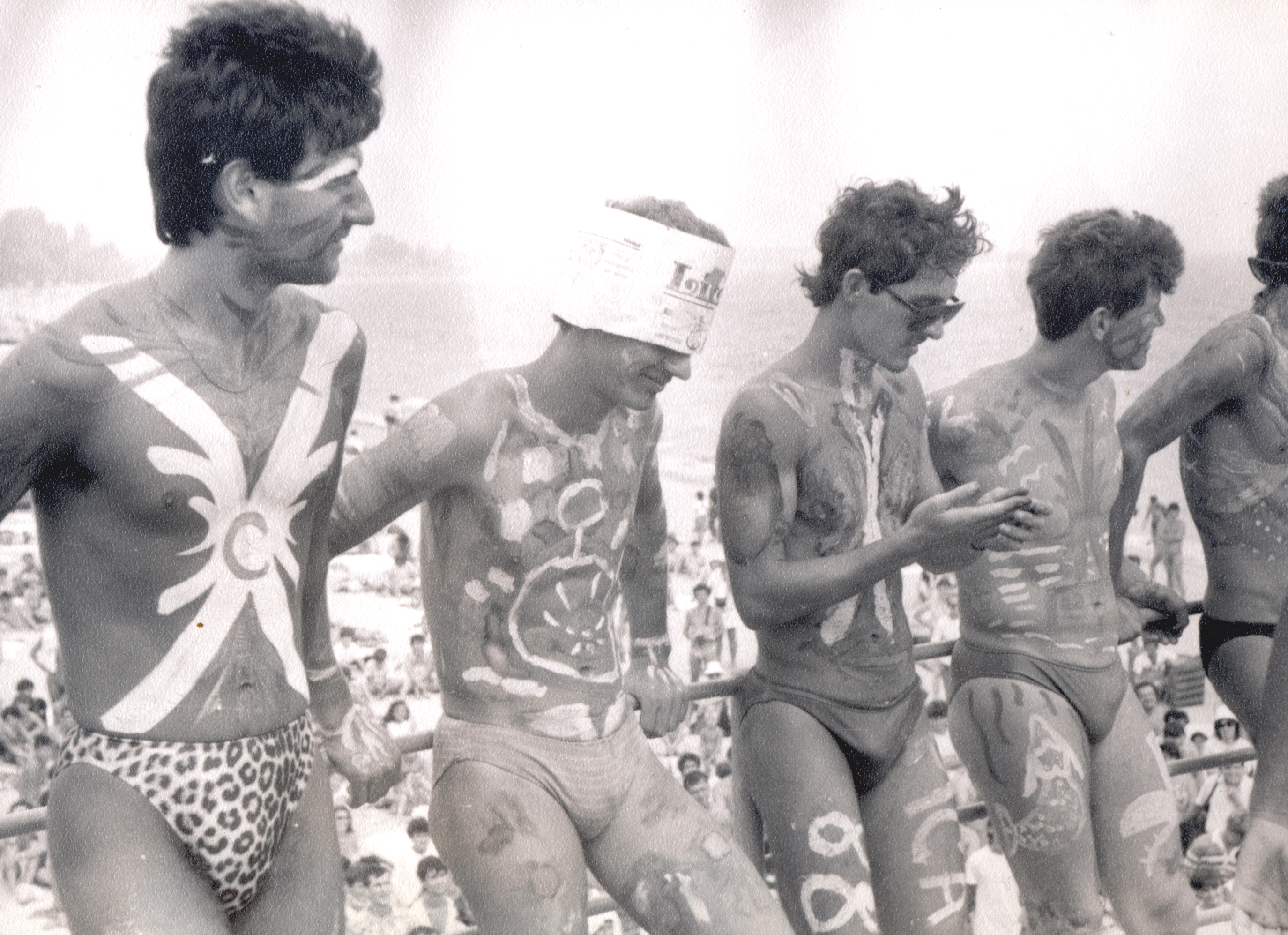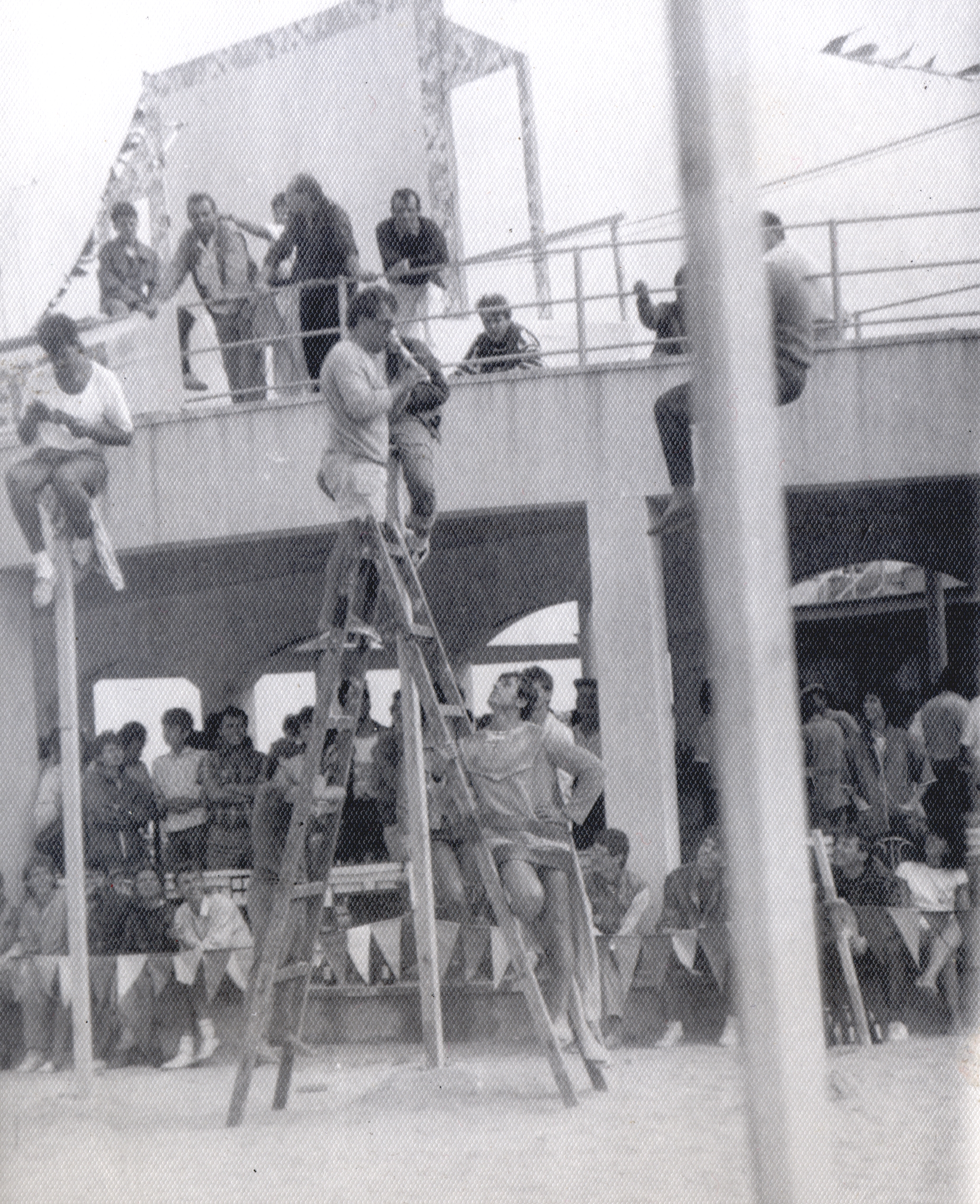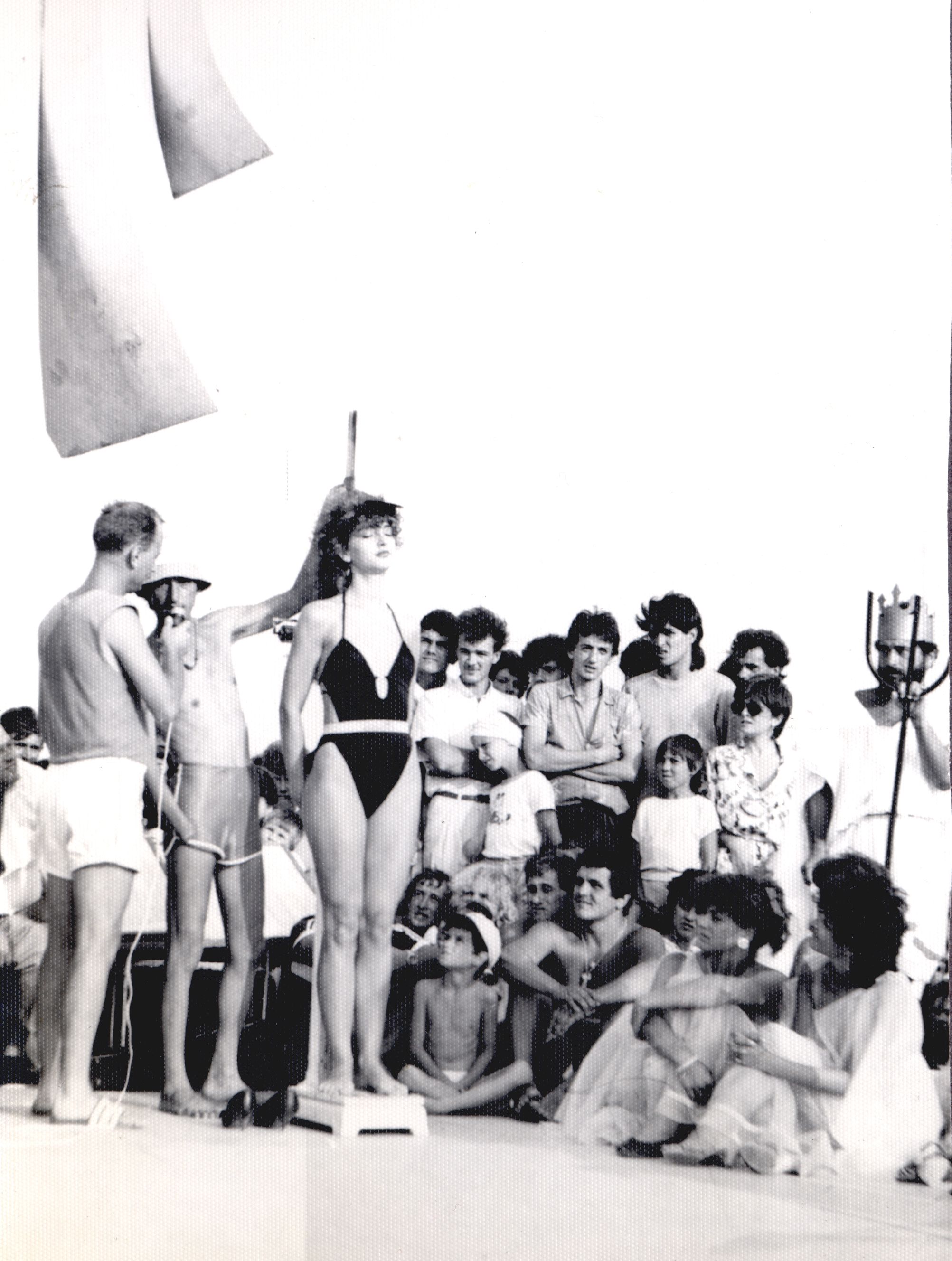The collection was assembled by Andrei Partoş and is stored in his private dwelling place. It was born, and subsequently consolidated, out of the radio presenter’s well-known passion as a collector and statistician. “Moreover,” says Andrei Partoş with reference to this personal archive, “there, at Radio Vacanţa-Costineşti, it was if not the most beautiful, then certainly one of the most beautiful periods in my whole life. Consequently, this collection is a significant part of my life, and there was no way I wouldn’t keep such things.”
As regards the manner in which the collection was built, it was, Andrei Partoş explains, perfectly natural. “Every summer, I came with materials from the seaside: photographs, tapes, newspapers, magazines. They somehow gathered of their own accord. Then, at a certain point after 1989, together with the usual photographs of every summer, I also brought the original catalogue in which were listed the most unusual records of each summer before 1989, the ‘Book of Records’ that was famous at the time.” The photographs in the Andrei Partoş–Radio Vacanţa-Costinești Private Collection document various moments in the activities within the Costineşti resort in which Radio Vacanţa-Costineşti was either organiser or partner; there are also snapshots of the location of the summer radio station and of the people who presented the programmes.
Radio Vacanţa-Costineşti was a semi-professional radio station, which in technical terms means that it was a radio-amplification station, which only broadcast via loudspeakers within the bounds of the Costineşti resort. Due to its semi-professional status and implicitly limited audience, the programmes could be broadcast live, without prior approval, as the routine procedure in a “normal” radio station required. In other words, this local radio station enjoyed a greater degree of freedom than normal radio stations, in fact as much freedom as those running it wanted and managed to achieve. Radio Vacanţa-Costineşti was thus a veritable social phenomenon of the 1980s. Its first broadcasts began in 1979, but those that gave shape to this phenomenon began to be transmitted regularly starting in the summers of 1981 and 1982.
In 1979, it operated in an improvised form, in a doughnut shop, with two tape recorders, a microphone, and two loudspeakers mounted on a post, all within a space of 1 metre by 1.5 metres, with room for only one person. The first broadcasts could be heard within a radius of a few dozen metres. In succeeding years, the broadcasting studio was rearranged and enlarged. By 1981, there were already dozens of posts, with two loudspeakers mounted on each, and the radius covered by the broadcasts had become significantly larger. In its heyday, the loudspeakers of Radio Vacanţa-Costineşti were mounted on around 100 posts, and its broadcasts could be heard practically everywhere in the resort.
In the last decade of Romanian communism, there were two summer radio stations with very similar names. This can be a source of confusion, but the differences between the two were significant. The other was Radio Vacanţa, the summer division of public radio, which broadcast on short and medium wave to an audience covering not only the entire Romanian seaside zone but also adjoining areas. The great majority of the programmes broadcast by Radio Vacanţa were prerecorded, and they had to be approved for broadcast by the authorities of the time. Radio Vacanţa-Costineşti broadcast through loudspeakers only in the resort of Costineşti, and all its programmes were live. In contrast to Radio Vacanţa and all other radio stations in communist Romania, there was no proof cassette on the basis of which each broadcast was given prior approval. Radio Vacanţa-Costineşti operated under the aegis of the BTT (Biroul de Turism pentru Tineret – Youth Tourism Office), and its editorial team was significantly smaller than that of Radio Vacanţa.
The best-known personality on Radio Vacanţa-Costineşti was Andrei Partoş, who was officially a presenter of radio programmes and unofficially the editorial coordinator of the radio station. “I still believe that it was one of the freest of radio stations, and when I say that, I dare to compare it with what we have today. There we made totally free radio. Someone might come and say that it was anarchy. You can call it what you like. But certainly, with the air of freedom that was breathed there, that radio station was the ‘mother’ of all the free radio stations of today. The mother and the father, even,” says Andrei Partoş of Radio Vacanţa-Costineşti. The live broadcasts of Radio Vacanţa-Costineşti took place in two periods each day: in the early part of the day, from 9 am to 1 pm; and in the afternoon, from 3 pm to 6 pm. The star show was “Telex Melody”, which was broadcast from 11 am to 12 noon and then from 4 pm to 6 pm. Between 1 pm and 3 pm, Radio Vacanţa-Costineşti did not stop broadcasting; sometimes it switched to the wavelength of Radio Vacanţa and relayed the latter’s programmes, but more often it broadcast whole concerts, usually of foreign bands like Led Zepellin, Pink Floyd, or Genesis, to name only some of the most frequently played groups. Such Western bands were excluded from the programmes of conventional radio stations. “We didn’t ask whether it was approved or not. We simply played the music. We didn’t ask if we were allowed to. If they hadn’t told me I wasn’t allowed, it meant that they approved – and I didn’t ask!”
Radio Vacanţa-Costineşti also constantly broadcast live dialogues and round tables, covering a wide range of themes. This was unprecedented in the period. These “talk-shows” were not broadcast by any other radio station operating in Romania. “The Romanian press was very much controlled in those days. But we broadcast live; we talked in real time – freely, without getting approval,” says Andrei Partoş, and he adds, “We were free, just like in another country, and this was happening in the time of communism. Free! – I have no other term to describe what it was like there. People felt, and we felt free.”
How this state of affairs was accepted may be partially understood through the mechanism by which the proportion of foreign music to Romanian music broadcast by Radio Vacanţa-Costineşti was able to be clearly in favour of the former. “What was forbidden was in demand here,” says Andrei Partoş, “and I did all I could to play this music. There was also a sort of tacit acceptance by the regime of this ‘air bubble’ of freedom – certainly there was something of the sort. There was that rule about the list of songs that had to be handed over to the UCMR (Uniunea Compozitorilor și Muzicologilor din România – Union of Composers and Musicologists in Romania ), in order for a sum of money to be transferred to them. On the list, of course there were Romanian names, so that on paper they would make up the majority of those UCMR lists. But, not least because there wasn’t any proof cassette, we played whatever music we wanted to. I mean, the vast majority was foreign music. There were mechanisms for getting round apparently strict rules – and we made full use of them. Theoretically, in the course of a day, there should have been a proportion of seven Romanian songs to three foreign. In fact it was the other way round, sometimes even two to eight.”
For a good few years in the last decade of Romanian communism, the audience of Radio Vacanţa-Costineşti consisted of everyone on the beach of the resort. “If there were 20,000 young people on the beach one day,” says Andrei Partoş, “that was the audience. Sometimes there were 30,000. And at the Festivals of the Sea, as many as 50,000.” And he adds, “Let’s remember that most of those who went there were educated. A lot of students. I know I did something important. And those years remain for me some of the most beautiful years in my life.” Similarly, Toni Grecu, one of the leaders of the comedy troupe Divertis, a star element in the programmes for young people organised every summer before 1989 in Costineşti, stated in an article in the newspaper Cotidianul in 2008: “Costineşti was the only parenthesis in Romanian communism. And I am not a nostalgic. We had the best music brought by Andrei Partoş and the best atmosphere.”
Radio Vacanţa-Costineşti continued to broadcast after 1989 too. Andrei Partoş was at the console for the last time in the summer of 2002.
